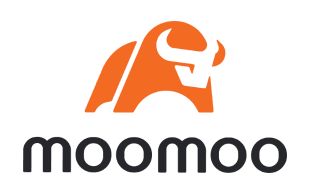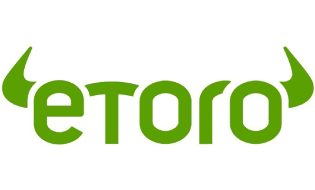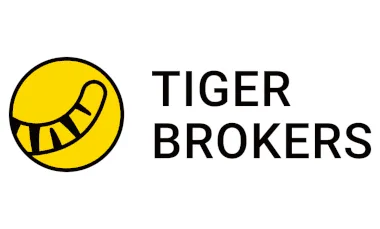Our top pick for
24/5 trading

Procter & Gamble Company (PG) is a leading household & personal products business with stocks listed in the US. It closed the previous market day at US$158.83. During the previous open market day, the price has varied from a low of USD158.02 to a high of USD160.91. Procter & Gamble Company is listed on the NYSE. All prices are listed in US Dollars.
Our top pick for
24/5 trading

Our top pick for
Copy trading

Our top pick for
Mobile app

Procter & Gamble Company's shares were split on a 2:1 basis on 20 June 2004. So if you had owned 1 share the day before the split, the next day you would own 2 shares. This wouldn't directly have changed the overall worth of your Procter & Gamble Company shares – just the quantity. However, indirectly, the new 50% lower share price could have impacted the market appetite for Procter & Gamble Company shares which in turn could have impacted Procter & Gamble Company's share price.
| 52-week range | US$155.1681 - US$178.8422 |
|---|---|
| 50-day moving average | US$168.0774 |
| 200-day moving average | US$168.9813 |
| Target price | US$171.3425 |
| PE ratio | 25.3534 |
| Dividend yield | US$4.026 (2.6%) |
| Earnings per share (TTM) | US$6.31 |
Use the fields above to explore the returns from a historical investment. Please refer to the charts further up this page to see performance over 5 years, or other periods. Past performance doesn't indicate future results. Capital is at risk.
Historical closes compared with the last close of $158.83
| 1 week (2025-04-29) | -2.11% |
|---|---|
| 1 month (2025-04-04) | -3.00% |
| 3 months (2025-02-06) | -5.95% |
| 6 months (2024-11-06) | -1.38% |
| 1 year (2024-05-06) | -3.41% |
|---|---|
| 2 years (2023-05-05) | 1.79% |
| 3 years (2022-05-06) | 1.81% |
| 5 years (2020-05-06) | 40.43% |
We currently don't have that product, but here are others to consider:
How we picked theseThe technical analysis gauge below displays real-time ratings for the timeframes you select. However, this is not a recommendation. It represents a technical analysis based on the most popular technical indicators: Moving Averages, Oscillators and Pivots. Finder might not concur and takes no responsibility.
Valuing Procter & Gamble Company stock is incredibly difficult, and any metric has to be viewed as part of a bigger picture of Procter & Gamble Company's overall performance. However, analysts commonly use some key metrics to help gauge the value of a stock.
Procter & Gamble Company's current share price divided by its per-share earnings (EPS) over a 12-month period gives a "trailing price/earnings ratio" of roughly 25x. In other words, Procter & Gamble Company shares trade at around 25x recent earnings.
That's relatively low compared to, say, the trailing 12-month P/E ratio for the NASDAQ 100 at the end of 2019 (27.29). The low P/E ratio could mean that investors are pessimistic about the outlook for the shares or simply that they're under-valued.
Procter & Gamble Company's "price/earnings-to-growth ratio" can be calculated by dividing its P/E ratio by its growth – to give 3.912. A low ratio can be interpreted as meaning the shares offer better value, while a higher ratio can be interpreted as meaning the shares offer worse value.
The PEG ratio provides a broader view than just the P/E ratio, as it gives more insight into Procter & Gamble Company's future profitability. By accounting for growth, it could also help you if you're comparing the share prices of multiple high-growth companies.
Procter & Gamble Company's EBITDA (earnings before interest, taxes, depreciation and amortisation) is US$24.2 billion (£19.1 billion).
The EBITDA is a measure of a Procter & Gamble Company's overall financial performance and is widely used to measure stock profitability.
Over the last 12 months, Procter & Gamble Company's shares have ranged in value from as little as US$155.1681 up to US$178.8422. A popular way to gauge a stock's volatility is its "beta".
Beta measures a share's volatility in relation to the market. The market (NYSE average) beta is 1, while Procter & Gamble Company's is 0.419. This would suggest that Procter & Gamble Company's shares are less volatile than average (for this exchange).
| Revenue TTM | US$83.9 billion |
|---|---|
| Operating margin TTM | 23.3% |
| Gross profit TTM | US$43.4 billion |
| Return on assets TTM | 10.98% |
| Return on equity TTM | 30.29% |
| Profit margin | 18.46% |
| Book value | 21.962 |
| Market capitalisation | US$375.1 billion |
| EBITDA | US$24.2 billion |
TTM: trailing 12 months
Dividend payout ratio: 60.39% of net profits
Recently Procter & Gamble Company has paid out, on average, around 60.39% of net profits as dividends. That has enabled analysts to estimate a "forward annual dividend yield" of 2.6% of the current stock value. This means that over a year, based on recent payouts (which are sadly no guarantee of future payouts), Procter & Gamble Company shareholders could enjoy a 2.6% return on their shares, in the form of dividend payments. In Procter & Gamble Company's case, that would currently equate to about $4.026 per share.
Procter & Gamble Company's payout ratio would broadly be considered high, and as such this stock could appeal to those looking to generate an income. Bear in mind however that companies should normally also look to re-invest a decent amount of net profits to ensure future growth.
Procter & Gamble Company's most recent dividend payout was on 14 May 2025. The latest dividend was paid out to all shareholders who bought their shares by 20 April 2025 (the "ex-dividend date").
Environmental, social and governance (known as ESG) criteria are a set of three factors used to measure the sustainability and social impact of companies like Procter & Gamble Company.
When it comes to ESG scores, lower is better, and lower scores are generally associated with lower risk for would-be investors.
Total ESG risk: 25.68
Socially conscious investors use ESG scores to screen how an investment aligns with their worldview, and Procter & Gamble Company's overall score of 25.68 (as at 12/31/2018) is pretty good – landing it in it in the 40th percentile of companies rated in the same sector.
ESG scores are increasingly used to estimate the level of risk a company like Procter & Gamble Company is exposed to within the areas of "environmental" (carbon footprint, resource use etc.), "social" (health and safety, human rights etc.), and "governance" (anti-corruption, tax transparency etc.).
Environmental score: 12.71/100
Procter & Gamble Company's environmental score of 12.71 puts it squarely in the 5th percentile of companies rated in the same sector. This could suggest that Procter & Gamble Company is a leader in its sector terms of its environmental impact, and exposed to a lower level of risk.
Social score: 10.97/100
Procter & Gamble Company's social score of 10.97 puts it squarely in the 5th percentile of companies rated in the same sector. This could suggest that Procter & Gamble Company is a leader in its sector when it comes to taking good care of its workforce and the communities it impacts.
Governance score: 11.51/100
Procter & Gamble Company's governance score puts it squarely in the 5th percentile of companies rated in the same sector. That could suggest that Procter & Gamble Company is a leader in its sector when it comes to responsible management and strategy, and exposed to a lower level of risk.
Controversy score: 3/5
ESG scores also evaluate any incidences of controversy that a company has been involved in. Procter & Gamble Company scored a 3 out of 5 for controversy – a middle-of-the-table result reflecting that Procter & Gamble Company hasn't always managed to keep its nose clean.
Procter & Gamble Company was last rated for ESG on: 2019-01-01.
| Total ESG score | 25.68 |
|---|---|
| Total ESG percentile | 39.95 |
| Environmental score | 12.71 |
| Environmental score percentile | 5 |
| Social score | 10.97 |
| Social score percentile | 5 |
| Governance score | 11.51 |
| Governance score percentile | 5 |
| Level of controversy | 3 |
The Procter & Gamble Company engages in the provision of branded consumer packaged goods worldwide. The company operates through five segments: Beauty; Grooming; Health Care; Fabric & Home Care; and Baby, Feminine & Family Care. The Beauty segment offers conditioners, shampoos, styling aids, and treatments under the Head & Shoulders, Herbal Essences, Pantene, and Rejoice brands; and antiperspirants and deodorants, personal cleansing, and skin care products under the Olay, Old Spice, Safeguard, Secret, SK-II, and Native brands. The Grooming segment provides blades and razors, shave products, appliances, and other grooming products under the Braun, Gillette, and Venus brand names. The Health Care segment offers toothbrushes, toothpastes, and other oral care products under the Crest and Oral-B brand names; and gastrointestinal, pain relief, rapid diagnostics, respiratory, vitamins/minerals/supplements, and other personal health care products under Metamucil, Neurobion, Pepto-Bismol, and Vicks brands. The Fabric & Home Care segment provides fabric enhancers, laundry additives, and laundry detergents under the Ariel, Downy, Gain, and Tide brands; and air care, dish care, P&G professional, and surface care products under the Cascade, Dawn, Fairy, Febreze, Mr. Clean, and Swiffer brands. The Baby, Feminine & Family Care segment offers baby wipes, and taped diapers and pants under the Luvs and Pampers brands; adult incontinence and feminine care products under the Always, Always Discreet, and Tampax brands; and paper towels, tissues, and toilet papers under the Bounty, Charmin, and Puffs brands. It sells its products primarily through mass merchandisers, e-commerce, grocery stores, membership club stores, drug stores, department stores, distributors, wholesalers, specialty beauty stores, high-frequency stores, pharmacies, electronics stores, and professional channels, as well as directly to consumers. The company was founded in 1837 and is headquartered in Cincinnati, Ohio.
Webull is a broker with zero-commission trading and a suite of tools to help you invest.
You often hear people talk about whether the ASX200 is up, down or flat. So, why is it such a big deal?
Find out the different ways you can invest in the S&P 500 index from Australia.
Following a couple of lean years for dividend investors, here are 10 ideas you could consider in your portfolio.
Find out how you can invest in Nasdaq and compare a range of leading brokers that let you invest in US stocks cheaply and quickly.
Index funds are a hot topic right now, but how do you actually invest in them?
Find cheap stock brokerage in Australia when buying and selling shares on the ASX and other international exchanges.
Compare share trading apps to find out which app has all the tools and resources you need to reach your investment goals.
Bell Direct offers one-second placement guarantees for trades, so you can take advantage of all trading opportunities at the price you want.
Follow these tips to find the best share trading platform for you.